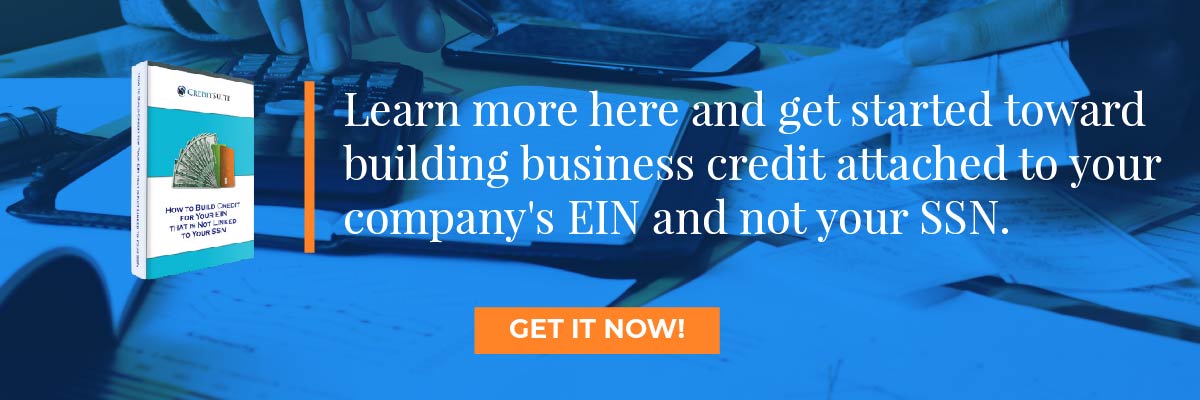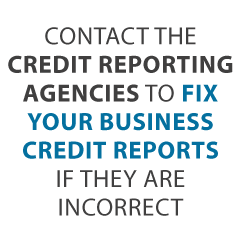- Connect With Us!
- (877) 600-2487
- info@creditsuite.com
Starting a Credit Freeze Due to the Equifax Data Breach
Published By Janet Gershen-Siegel at September 12th, 2017
Starting a Credit Freeze is Not Hard – We Show You How
As the news continues to come out from the Equifax data breach, one thing is for certain in a sea of uncertainty – it will affect a lot of people. You may want to think about starting a credit freeze.
The Scope of the Problem and Why You Want to Be Starting a Credit Freeze
There are about 240 million adults in the United States, as of the date of writing this blog post. Equifax estimates their data breach affected some 143 million persons, although some of those people were citizens of the UK and Canada.
In addition, it is possible that a fraction of those affected are under the age of 18. But that figure is probably not too high. For example, consider that a 17-year-old girl might get her first gas card. But it’s highly, highly unlikely that a 5-year-old even knows what credit is.
Therefore, if we operate under the assumption that about 140 million of the affected people are American adults, then the breach is affecting about 58% of all of the adults in the United States. Hence the prudent assumption is that you are in that group.
Starting a Credit Freeze Because the Equifax Site Seems Untrustworthy
Furthermore, the Equifax site itself seems unreliable. Security news and investigation website Krebs on Security reports that some people got different answers from the Equifax website (with respect to whether they were on the affected list of people or not) if they switched from a desktop to the mobile version of that site.
Still others did not get a yes or no answer at all. Instead, they just got an offer of credit monitoring. Plus many sites reported that you could enter random names and numbers and the site would return an answer.
Equifax Stumbling Out of the Gate Makes Anyone Want to Consider Starting a Credit Freeze
Equifax had numerous issues with the breach, not the least of which has been its handling of the matter.
Starting a Credit Freeze Due to the Fine Print and Attempted Forfeitures
A few days ago, Equifax had fine print on its credit monitoring sign up page. It told concerned consumers that by clicking to get free credit monitoring for one year, they were also automatically forfeiting their rights to sue the company for damages sustained due to the breach. This understandably caused an outrage, and the company dialed it back, saying that now there is no waiver of a right to sue.
And a good thing, too, virtually every judge out there dislikes a waiver of the right to sue (called a ‘covenant not to sue’) . Covenants not to sue get strict interpretations if they are okay at all. And they are more likely to be okay if the following conditions apply:
- The forfeiture of the right to bring suit is clearly spelled out
- The parties are on more or less equal footing with reference to being able to bargain and shape their agreement
Neither circumstance applies here. The attempts at forcing forfeitures were hard to spot and the company did not spell out that anyone selecting the years’ worth of free credit monitoring was giving up anything or paying any sort of hidden charges, monetary or otherwise. Furthermore, the parties were not on an equal footing at all. The waiver was presented as a ‘take it or leave it’ proposition.
Learn more here and get started toward building business credit attached to your company’s EIN and not your SSN.
Cybersecurity
Technology news provider Ars Technica determined that the EquifaxSecurity2017 started off as a regular old WordPress blog, and did not have enterprise-level security – something which should have been a given, considering the breach and the fact that the site was holding names and Social Security numbers. Plus the domain name isn’t even registered to Equifax – it’s registered to a company called Mark Monitor. Krebs on Security had reported that the site was initially registered to Edelman PR. Therefore, it is safe to presume that the registration of this site changed hands in less than three days.
Advance Damage Control
Beyond the question of possible insider trading (more on that in a moment), Krebs on Security also noted the company bought and registered the equihax.com domain on September 5, 2017 (two days before the public announcement of the breach by one Brandon Schondorfer. Why did they buy that domain?
This happens as a proactive measure when a company is about to announce bad news. For all of the companies which never claimed their company name + sucks.com, this can be a smart move. However, here the timing is suspect.
But the company was right about one thing – people are using the equihax term– as a hashtag on Twitter. As you might expect, Twitter is not being kind about this.
So even more people are considering starting a credit freeze, and for good reason.
Insider Trading Rears its Ugly Head
Oh yes, they went there. Powerhouse New York City law firm Bronstein, Gewirtz & Grossman, LLC is investigating whether Equifax or its employees possibly violated Sections 10(b) and 20(a) of the Securities Exchange Act of 1934. The really important parts are Section 10(b) (5), which is about fraudulent business practices, and Section 20(a), the insider trading law.
Will the Bronstein firm take the case? No one knows yet. However, the firm handles class actions suits regularly, so any suit may very well turn out to be a rather large class action suit.
Learn more here and get started toward building business credit attached to your company’s EIN and not your SSN.
Starting a Credit Freeze: What You Can Do
I mentioned some things you can do yesterday, but here are more. It is becoming clear that putting a credit freeze on your account is the best way to go. A credit freeze means that every time someone (including you) wants to open up another credit account or get a loan, you need to use your PIN to temporarily unlock your account. Obviously, you don’t unlock for thieves (duh!).
Keep your PINs safe and secret, of course. You can take off the freeze permanently if you want to, and some of the services allow you to preemptively remove a freeze on a credit inquiry, which you might want to do if you’re buying a car or the like and know which company will be making the inquiry.
Credit freezes do not prevent identity theft, but they do make life harder for thieves. And with so many accounts to choose from, being frustrated and slowed down by your credit freezes might be enough for a thief to move onto the next of 143 million names on his or list.
Or not. According to the New York Times, possible uses for this data are not just credit cards obtained fraudulently, but also people going to the emergency room and using your medical benefits, or thieves submitting a tax return for you on January 2 (and not out of the goodness of their hearts) to steal your refund.
Starting a Credit Freeze on Your Account
Starting a credit freeze due to the Equifax breach is easy but it will take a bit of time. Plus all of these services are overwhelmed right now. Be patient.
Starting a Credit Freeze with Equifax
Equifax (free): https://www.freeze.equifax.com/Freeze/jsp/SFF_PersonalIDInfo.jsp
Starting a Credit Freeze with Experian
Experian (site kept crashing but I eventually got through): https://www.experian.com/freeze/center.html
Learn more here and get started toward building business credit attached to your company’s EIN and not your SSN.
Consider Starting a Credit Freeze with TransUnion
TransUnion ($5 or free, depending on your state): https://www.transunion.com/credit-freeze/place-credit-freeze
Starting a Credit Freeze with Innovis
Innovis (not as big as the others but this is easy and you might as well. However, you must snail mail the document in):
https://www.innovis.com/assets/InnovisSecurityFreezeRequest-f77aade600faab215c64ce801278a260.pdf
All of these steps were fast; the entire process, including printing forms (and even changing ink cartridges) took me maybe an hour and a half.
A Quick Read of Your Equifax Credit Report
Of course as you monitor, you’re going to want to read your report. It breaks down into segments.
Company Identifying Information
The first area shows identifying information about your company, e. g. the business name, and its address and telephone number, but also details such as whether your small business is a corporation. And it shows the date you first started business. This segment will also feature the number of employees and your business’s annual sales. This element will also show if there are any alerts. So it is immediately below the date.
These first sections serve as a summary of the balance of the report.
Scores
The next portion contains two scores:
- Your small business credit risk score for suppliers and
- Your business failure risk score.
Public Records
Next, the report shows public records. These consist of bankruptcies, judgments, and liens, and display the amounts, if any. And they show filing dates for the most recent ones. This area also shows the means of satisfaction for these matters. E.g. if the lien was settled.
Credit Usage
The next section is a pie chart showing your business’s credit usage. It graphically shows which percentage of your available credit line you are taking advantage of. It also has identifying labels which show how much each percent truly is. So this is your credit utilization rate.
Credit Report Summary
In the summary area, the report shows the number of your company’s credit accounts, and the date these credit accounts became active. It also has any amounts past due, and your most severe status within the last 24 months. This is how slowly you have paid off your debts. And it has the single highest amount of credit extended, the median balance, and the average open balance.
All of these aspects divide into financial and nonfinancial categories. Your business’s recent activity is also provided; this includes things like the amount of new accounts opened or delinquent accounts, the number of inquiries, and the number of updated accounts.
This portion also includes a line graph which embodies a trend line showing your company’s average days beyond terms by date reported. So this is for your nonfinancial accounts only. The report will point out the recent trend, and how many days, if any, your company is behind terms. This section also shows your business’s payment index and compares it to your company’s business sector.
Financial Account Highlights and Details for the Most Recent 36 Months
This next sector begins with highlights and then goes into detail). It includes basic information on financial accounts like commercial credit cards and leases, showing status; open and closed dates; original and current credit limits; balance; overdue amount, if any; and your company’s 24-month history.
The details subsection elaborates on the highlights portion. It adds details such as the payment amount and frequency, and if a debt is secured. So secured vs. unsecured credit matters a good deal in the event of a bankruptcy. This is because secured creditors get a preferred place in line for limited assets.
Financial Account Payment Details
This next piece shows balances, past due amounts, aging categories, and dates of first delinquency, if any. So these are for the most recent 12 month period.
Non-Financial Payment Credit Experiences and Status
The following portion shows trade accounts etc., and also includes balances, aging categories, and a 24-month history.
Public Records
Next up are public records. This section shows more thorough information on judgments, liens, and bankruptcies.
Decisioning Details
The next portion shows the particulars of what entered into your business failure risk summary report.
Additional information
The final component of the report shows any DBA information and any related files, plus any other miscellaneous details. These can include details like comments which may be in a report.
2020 Update
On February 10, 2020, the Boston Globe reported that Attorney General William Barr and the United States Justice Department were charging four members of China’s military on suspicion of the 2017 hack into Equifax. The Attorney General noted there have been any number of data theft by the Chinese military in recent years. These thefts have been of sensitive information such as identifying American intelligence officers. One use of Equifax’s financial data could be to find out if any intelligence officers have money issues – and would thereby be subject to bribery or blackmail. Stay tuned as we continue to follow this story.
Starting a Credit Freeze: Takeaways
We will continue to monitor this story, just like you should be monitoring your credit scores. Stay tuned!

 " class="attachment-blog-single size-blog-single wp-post-image" alt="Get Business Credit Cards for New Businesses Credit Suite-Business Line of Credit Decoded" title="Get Business Credit Cards for New Businesses">>
" class="attachment-blog-single size-blog-single wp-post-image" alt="Get Business Credit Cards for New Businesses Credit Suite-Business Line of Credit Decoded" title="Get Business Credit Cards for New Businesses">>
